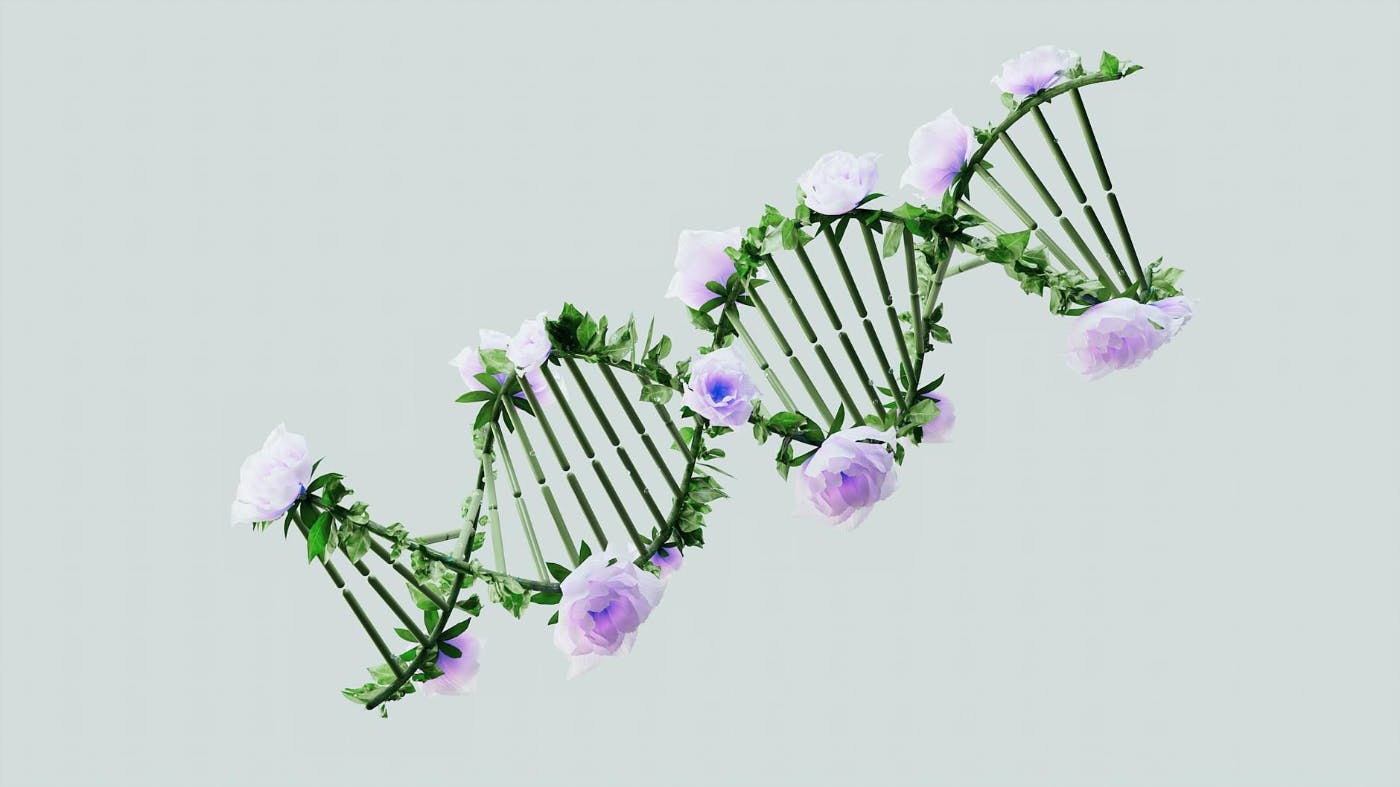This paper is available on arxiv under CC 4.0 license.
Authors:
(1) Vianney Brouard, ENS de Lyon, UMPA, CNRS UMR 5669, 46 All´ee d’Italie, 69364 Lyon Cedex 07, France; E-mail: [email protected].
Table of Links
- Abstract & Introduction and presentation of the model
- Main results and biological interpretation
- First-order asymptotics of the mutant sub-populations for an infinite mono-directional grap
- First-order asymptotics of the mutant sub-populations for a general finite trait space (Theorem 2.1)
- Convergence for the stochastic exponents (Theorem 2.2)
- Acknowledgements & References
Acknowledgements
The author would like to thank H´el`ene Leman for inspiring and helpful discussions and feedback.
References
[1] Guillaume Achaz. Frequency spectrum neutrality tests: one for all and all for one. Genetics, 183(1):249–258, 2009.
[2] Jochen Blath, Tobias Paul, and Andr´as T´obi´as. A stochastic adaptive dynamics model for bacterial populations with mutation, dormancy and transfer. ALEA, Lat. Am. J. Probab. Math. Stat., 20:313–357, 2023.
[3] Anton Bovier, Loren Coquille, and Charline Smadi. Crossing a fitness valley as a metastable transition in a stochastic population model. The Annals of Applied Probability, 29(6):3541–3589, 2019.
[4] Ivana Bozic and Martin A Nowak. Timing and heterogeneity of mutations associated with drug resistance in metastatic cancers. Proceedings of the National Academy of Sciences, 111(45):15964– 15968, 2014.
[5] Nicolas Champagnat, Sylvie M´el´eard, and Viet Chi Tran. Stochastic analysis of emergence of evolutionary cyclic behavior in population dynamics with transfer. The Annals of Applied Probability, 31(4):1820–1867, 2021.
[6] David Cheek and Tibor Antal. Genetic composition of an exponentially growing cell population. Stochastic Processes and their Applications, 2020.
[7] David Cheek, Tibor Antal, et al. Mutation frequencies in a birth–death branching process. The Annals of Applied Probability, 28(6):3922–3947, 2018.
[8] Loren Coquille, Anna Kraut, and Charline Smadi. Stochastic individual-based models with power law mutation rate on a general finite trait space. Electronic Journal of Probability, 26:1–37, 2021.
[9] Alexander Davis, Ruli Gao, and Nicholas Navin. Tumor evolution: Linear, branching, neutral or punctuated? Biochimica et Biophysica Acta (BBA)-Reviews on Cancer, 1867(2):151–161, 2017.
[10] Claude Dellacherie and Paul andr´e Meyer. Probabilit´es et Potentiel. Collection Enseignement des Sciences. Hermann, Paris, 1975.
[11] Richard Durrett. Branching process models of cancer. Springer, 2015.
[12] Richard Durrett and Stephen Moseley. Evolution of resistance and progression to disease during clonal expansion of cancer. Theoretical population biology, 77(1):42–48, 2010.
[13] Rick Durrett and John Mayberry. Traveling waves of selective sweeps. The Annals of Applied Probability, 21(2):699–744, 2011.
[14] Manuel Esser and Anna Kraut. A general multi-scale description of metastable adaptive motion across fitness valleys. arXiv preprint arXiv:2112.12675, 2021.
[15] Jasmine Foo and Kevin Leder. Dynamics of cancer recurrence. The Annals of Applied Probability, 23(4):1437–1468, 2013.
[16] Jasmine Gamblin, Sylvain Gandon, Fran¸cois Blanquart, and Amaury Lambert. Bottlenecks can constrain and channel evolutionary paths. Genetics, 224(2):iyad001, 2023.
[17] Einar Bjarki Gunnarsson, Kevin Leder, and Jasmine Foo. Exact site frequency spectra of neutrally evolving tumors: A transition between power laws reveals a signature of cell viability. Theoretical population biology, 142:67–90, 2021.
[18] Einar Bjarki Gunnarsson, Kevin Leder, and Xuanming Zhang. Limit theorems for the site frequency spectrum of neutral mutations in an exponentially growing population. arXiv preprint arXiv:2307.03346, 2023.
[19] Agnes Hamon and Bernard Ycart. Statistics for the luria-delbr¨uck distribution. Electronic Journal of Statistics, 2012.
[20] Siˆan Jones, Wei-dong Chen, Giovanni Parmigiani, Frank Diehl, Niko Beerenwinkel, Tibor Antal, Arne Traulsen, Martin A Nowak, Christopher Siegel, Victor E Velculescu, et al. Comparative lesion sequencing provides insights into tumor evolution. Proceedings of the National Academy of Sciences, 105(11):4283–4288, 2008.
[21] Peter Keller and Tibor Antal. Mutant number distribution in an exponentially growing population. Journal of Statistical Mechanics: Theory and Experiment, 2015(1):P01011, 2015.
[22] David G Kendall. Birth-and-death processes, and the theory of carcinogenesis. Biometrika, 47(1/2):13–21, 1960.
[23] David A Kessler and Herbert Levine. Scaling solution in the large population limit of the general asymmetric stochastic luria–delbr¨uck evolution process. Journal of statistical physics, 158(4):783– 805, 2015.
[24] Jean-Fran¸cois Le Gall et al. Brownian motion, martingales, and stochastic calculus, volume 274. Springer, 2016.
[25] Douglas E Lea and Charles Alfred Coulson. The distribution of the numbers of mutants in bacterial populations. Journal of genetics, 49:264–285, 1949.
[26] Shaoping Ling, Zheng Hu, Zuyu Yang, Fang Yang, Yawei Li, Pei Lin, Ke Chen, Lili Dong, Lihua Cao, Yong Tao, et al. Extremely high genetic diversity in a single tumor points to prevalence of non-darwinian cell evolution. Proceedings of the National Academy of Sciences, 112(47):E6496– E6505, 2015.
[27] Salvador E Luria and Max Delbr¨uck. Mutations of bacteria from virus sensitivity to virus resistance. Genetics, 28(6):491, 1943.
[28] Michael D Nicholson and Tibor Antal. Competing evolutionary paths in growing populations with applications to multidrug resistance. PLoS computational biology, 15(4):e1006866, 2019.
[29] Michael D Nicholson, David Cheek, and Tibor Antal. Sequential mutations in exponentially growing populations. PLOS Computational Biology, 19(7):e1011289, 2023.
[30] Tobias Paul. The canonical equation of adaptive dynamics in individual-based models with power law mutation rates, 2023.
[31] Andrea Sottoriva, Haeyoun Kang, Zhicheng Ma, Trevor A Graham, Matthew P Salomon, Junsong Zhao, Paul Marjoram, Kimberly Siegmund, Michael F Press, Darryl Shibata, et al. A big bang model of human colorectal tumor growth. Nature genetics, 47(3):209–216, 2015.
[32] Subramanian Venkatesan and Charles Swanton. Tumor evolutionary principles: how intratumor heterogeneity influences cancer treatment and outcome. American Society of Clinical Oncology Educational Book, 36:e141–e149, 2016.
[33] Marc J Williams, Benjamin Werner, Chris P Barnes, Trevor A Graham, and Andrea Sottoriva. Identification of neutral tumor evolution across cancer types. Nature genetics, 48(3):238–244, 2016.
[34] Kai Zeng, Yun-Xin Fu, Suhua Shi, and Chung-I Wu. Statistical tests for detecting positive selection by utilizing high-frequency variants. Genetics, 174(3):1431–1439, 2006.

